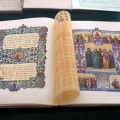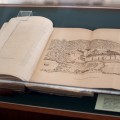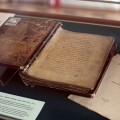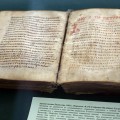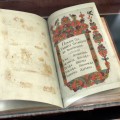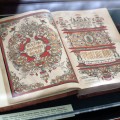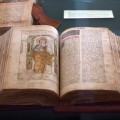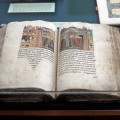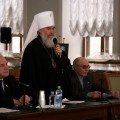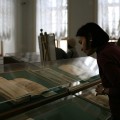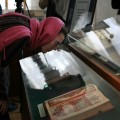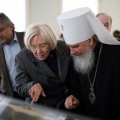The Day of Orthodox books in the RSLLocation: Pashkov House
A one day exhibition, timed to coincide with the Day of Orthodox books, which is being celebrated in our country for the first time, occurred in Pashkov House of the Russian State Library on March 18, 2010. The event was attended by representatives of the State Duma, the Department of Education of Moscow, 'The Pilgrim center' of the Moscow Patriarchate, students of the Moscow State University, of the Orthodox school in the name of the Apostle and Evangelist John the Theologian and of the Orthodox St. Tikhon Humanitarian University. While opening the exhibition, the President of the RSL Viktor Fyodorov empathised that libraries and religious organizations have always been closely linked. Thus, the first libraries appeared in monasteries, and the first books, which they contained, were the religious ones. To this day the Russian State Library has very close relations with the Russian Orthodox Church, has a lot of interesting joint projects and plans to continue this cooperation. In his speech, Metropolitan of Kaluga and Borovsk Clement drew attention to the fact that the written language itself originated in Russia with the rise of Christianity. At a time when books were handwritten, a copy of the Bible could be equal to the cost of a whole estate. With the development of book printing, the religious books gradually entered every household and the families gathered in the evenings, read aloud and discussed passages from the Scriptures. However, as the His Grace lamented, most people in Russia today have never held a Bible. So actions such as today’s exhibition in particular are aimed at the popularization of Orthodox books and are intended to improve the situation In an effort to bring religious literature to the Russian people, the Church does not reject modern technology. Clement himself made a point of it and so did the chairman of the State Duma committee for public associations and religious organizations of the Russian Federation Sergey Popov. 'The fact that the RSL demonstrates the history of our best books, is unique. Previously, these editions were available to hold and examine only to a few eminent scientists, yet for many people the opportunity to see these books brings a great joy'. Sergey Aleksandrovich talked about the need to transfer the most valuable and rare Orthodox publications into digital form to make them accessible to every citizen of our country.
For the attention of the guests there were presented these unique and rare manuscripts: • The Arkhangelsk Gospel. 1092 The fourth of antiquity extant Slavonic manuscripts. The exhibits were introduced to the guests by the RSL staff: Anna Rodionova, Svetlana Zavadskaya and Maria Zolotova. They told us about two most notable publications by the pioneer book printer Ivan Fedorov: the first precisely dated Russian printed book — 'The Apostle' and the first full edition of the Bible in Church Slavonic language, published in Ostrog in 1581. Also there could be seen Orthodox Books of A special section of the exhibition was represented by printed editions of the Lives, Pateric, synodic and pilgrimages to holy places. This is the 'Antiquities of the Russian state' with illustrations by Academician of Painting F. Solntsev; 'Synodic or Pomyannik' published in 1700 to commemorate the death of the last Patriarch Adrian; Collected Lives 'Under the grateful sky' with a picture of Great Prinsess Elizaveta Feodorovna, published by her for the 'benefit of children of the soldiers, who defended the Motherland' in 1914. The represented exhibits are unique and rarely offered for public display. Photo: Maria Kolosova
|
||||||||||||||||||||||
|
The site is created with financial support of Federal agency on the press and mass communications of the Russian Federation
RSL official siteFor more information please contact |
||||||||||||||||||||||






